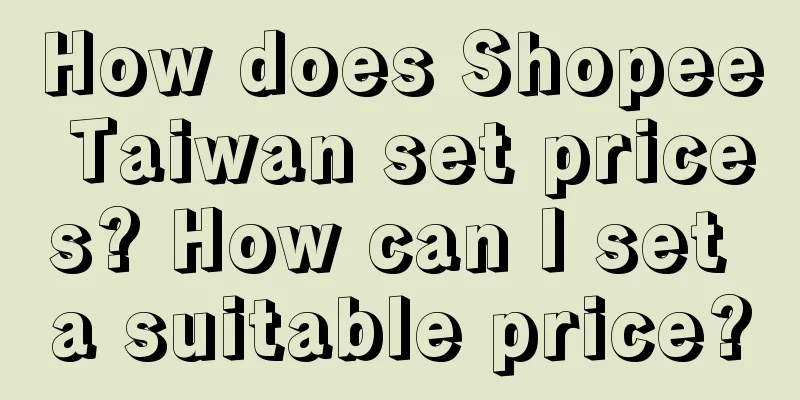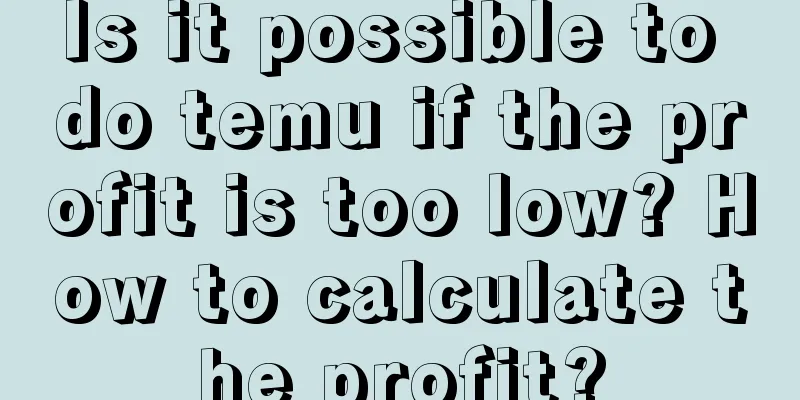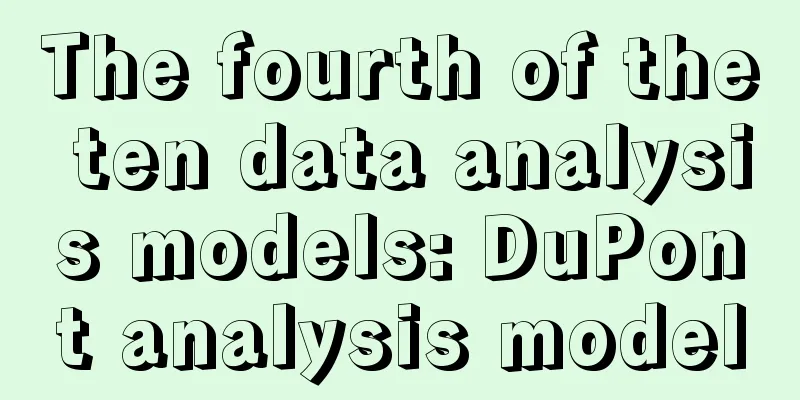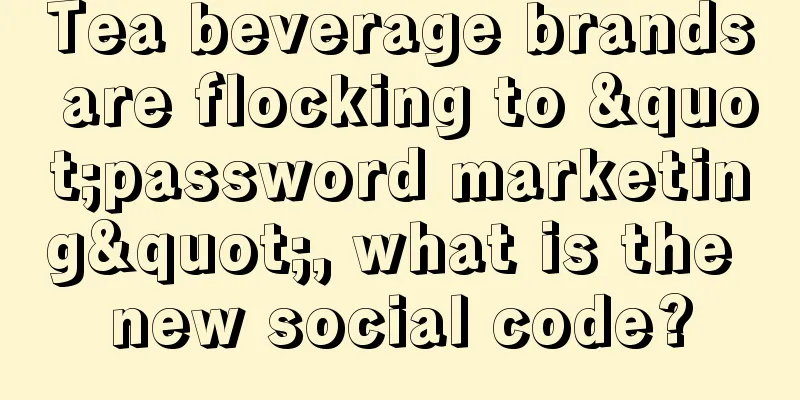15,000 words sharing丨How to build a user growth system?

Before sharing, let me explain my personal background: from 2013 to 2019, I worked as the ticket operations director at Lvmama Travel, from 2019 to 2020, I worked as a senior user growth expert at OYO Hotels, and after 2020, I worked as the head of user growth at a travel unicorn. Therefore, today’s sharing will be limited by my own experience. All experiences will be more biased towards local life and transaction-related businesses, and may not be applicable to all businesses. Please bear with me. 1. What is User Growth?Everyone should have seen the AARRR model. In 2007, Dave McClure proposed the Pirate Model (AARRR model) in a sharing session. It is essentially a qualitative business model that makes a qualitative split of user growth work, and there is no absolute order of precedence. For example, in the user introduction period, customer acquisition, activation and dissemination are all involved, while when the user grows to the churn period, retention and revenue actions will be used. Therefore, it is not necessary to give priority to any one of them. It just splits the user growth matters. From a broader perspective, we can define "customer acquisition", "dissemination" and "activation" as new users, and "retention" as user retention. New users × user retention = user scale, and "revenue" in the AARRR model can correspond to user value. User scale × user value equals the total value of users in the product. This is actually the core operating formula for all companies in their operations, that is, in a broad sense, user growth = operation. 2. What is the essence of user addition and retention?Today let’s talk about “user scale” first, and leave user value aside for now. We ask ourselves a few questions: What is new user acquisition? What is user retention? What is their essence? I think, The essence of adding new users is the process of reaching users, conveying product value and converting users through a specific combination of means under certain constraints. How to understand it? Let me give you a very inappropriate analogy (disclaimer: the analogy is just for the convenience of understanding, and it is definitely not to objectify women), for example: Xiao Ming and Xiao Hong went on a blind date. Xiao Ming said: I have 10 apartments in the city center. Xiao Hong said: It doesn’t matter if there are apartments or not, the main thing is that you have good character. In the end, she fell in love with him. In this case, the product is Xiao Ming, the user is Xiao Hong × N, and the channel linking the product and the user is the channel for meeting blind date partners, such as relatives and friends/matchmaking agencies/dating apps, etc. The core value of this product is that Xiao Ming owns ten houses. So what is the essence of user retention? The essence of user retention is to maximize the user's subjective utility for the product by continuously meeting the user's needs through building specific scenarios within the product. To help you understand this, let’s quote the above analogy: After Xiaohong married Xiaoming, Xiaohong said that Laowang also has 10 houses and he is handsome, what do you have? Xiaoming said: Don't panic, although he is handsome, I am gentle, and I have a 1 billion inheritance that will be received this year. Xiaohong said: I still prefer gentle men. In this case, we found that the old scenario (10 houses) could no longer meet the needs of users, so the clever user growth team built a new scenario (1 billion inheritance) to make the user (Xiaohong) feel that this product (Xiaoming) continued to satisfy her subjective utility. About utility:
To put it simply, different people have different preferences for different things, and everyone has their own preferences. 3. Goal setting: core goal selection for quantifying user scaleFor the quantitative goal of user scale, in general, we can make decisions based on two dimensions: one is the business service model (transaction vs. non-transaction), and the other is the frequency of service usage (high vs. low).
But there are also things to note: The essence of target selection is to reflect the user scale indicator that truly feels the value of the business. Therefore, in non-transactional businesses, the definition of active is not necessarily just visits. It can be judged based on the characteristics of the business itself. For example, a news app can be defined as the "number of users who read news daily", and DAU and visit-reading conversion can be used as auxiliary reference indicators. The more complex the product's business model is, the more important it is to define the user scale indicator from a global perspective. For example, Meituan has both a high-frequency bicycle business, a medium-frequency group purchase business, and a low-frequency wedding business. From a global perspective, it is more reasonable to define the DAU target for Meituan. 4. Breaking down the target: target breakdown and focus decision-makingThe core essence of goal decomposition is: through specific logic, we break down the goals into indicators that can be directly intervened in our daily operational actions. Let’s take DAU as an example to try to break down this goal: By breaking down DAU layer by layer, we can divide our intervention targets into two categories:
There is also a misunderstanding here that needs your attention: Adding new users does not mean increasing the number of new customers on the platform. For large platforms, since the existing user pool is large enough, attracting lost old customers is equally important. So, after breaking down the goals, how should we decide whether to focus on adding new users or retaining users first? Determine based on the size of existing users. If the existing user base is small, there is no doubt that we should focus on adding new users. If the existing user scale is large, there are several categories:
5. How to add new users?First, we need to make it clear that adding new users is divided into three steps, and each step must answer several core questions: Determine potential user profiles: Which users will use your product? What is the ratio of men to women? Is there a strong regional attribute? What age group is it suitable for? Who is the final consumer decision maker? List new channels and marketing methods for your product: Where can you find the users you have identified? How can you reach them? How can you convince them to choose your product? Decide on the priority of new channels and promote project implementation: Is the new channel/marketing method you have determined intervenible? How certain is it? Is the user scale large? Is the user cost controllable? So, how do we identify new user channels? I define user addition as three links, namely, the three rings of user addition: positions, matrix, and channels: First ring (position): Whether it is WeChat mini program, Alipay mini program or APP, they are our most core user transaction conversion positions. Second Ring (Matrix): Establishing service accounts, subscription accounts, video accounts, and operating corporate WeChat accounts and communities in the WeChat ecosystem, and establishing official Douyin accounts and Xiaohongshu accounts on major platforms, all of which are to establish an operating matrix for their own products and open up key channels for communicating and maintaining relationships with users. Three Rings (Channels): The channels newly added by users can be divided into five modules:
1. Offline scenarios: Find scenarios related to business integrationNote that the following cases are only applicable to O2O related businesses. Let’s take an example to illustrate how to add new users in offline scenarios. The first case is Lvmama’s ticket business. Project 1: Scenic spot booking We started to offer ticket packages for theaters between 2014 and 2016. What problems does ticket packages solve? The ticket business shows a significant Matthew effect, with users' attention and traffic concentrated in top scenic spots (such as amusement parks and landscape scenic spots, where 20% of the scenic spots contribute 80% of the revenue). However, a major pain point on the user side is that the ticket prices for scenic spots are relatively high. What are the pain points for these scenic spots? The pressure on the number of tourists is relatively high. If I sell my tickets normally, the GMV target can be guaranteed, but the number of tourists may not be achieved well. Our solution is to book scenic spot tickets for a short period of time, guarantee the regular GMV of the scenic spot, obtain pricing power within the scenic spot cycle, and lower the price by offering 1 yuan or 9 yuan tickets, so that the number of tourists in the scenic spot can increase while guiding new users to use our APP. In this way, we can acquire new users at the lowest cost and meet the core demands of tourists and scenic spots in stages. Project 2: Scan QR code to purchase at scenic spots First, we have observed some problems on the supply side. If you visit scenic spots during holidays, you will find that the online rate of many scenic spots is relatively low. Many tourists go to the box office to buy tickets, which causes congestion during holidays. The scenic spots are in trouble, and the tourists' experience is also extremely poor. One advantage of online e-tickets is that you don’t have to queue up at the scenic spot’s box office to buy and pick up tickets. After purchasing tickets online, you can get e-tickets and scan the QR code or ID card to enter the park. So we discussed with the scenic spot and set up a point near the gate of the scenic spot to guide users to download the APP. New users can also buy tickets at a discount and buy tickets or get e-tickets to enter the park directly. This not only solves the pain points of the scenic spot, but also solves the problem of tourists queuing. The second case is the in-store conversion scenario of OYO Hotel. OYO Hotels is a SoftBank-invested hotel franchise company originated in India. At its peak in China, it had 13,000 employees and more than 10,000 franchised hotels, and was more inclined towards the lower-tier markets. We found that the most suitable way to increase user growth for this product is to achieve in-store conversion. The reason is that 70% of users who come to stay in the hotel are walk-ins. These people do not make online reservations, but go directly to the front desk to view the room, pay, and check in. Therefore, we believe that the hotel here can convert walk-in users into users of our online products. The user scale is large enough and the time they stay at the front desk is long enough, so there is an opportunity. Through research and visits, we found that in this whole conversion process, the front desk staff plays the most core role. Their salary is not high (about 3,000 yuan per month). If we give 5 yuan to the front desk staff for each user we convert, and the front desk staff does their job seriously, the conversion reward will exceed the salary income. However, we found that their enthusiasm was relatively low in the early stage. We took many operational actions around this role: First, we solved the problem of slow conversion reward arrival and high uncertainty through self-developed mini-programs. Secondly, we pulled the front desk to the regional community, reported the front desk conversion and reward rankings, and guided the front desk to compete positively. This greatly improved the enthusiasm of the hotel front desk. Through the above two cases, I try to make you understand: We need to find offline scenarios in business touchpoints where users can easily gather and stay for a reasonable amount of time, and propose user conversion plans by understanding the needs of the supply side and the user side. 2. Advertising: A method for rapidly and massively attracting usersAdvertising is divided into two categories: brand advertising and performance advertising. Brand advertising is a means to build product brand power, and product brand power is an amplifier for new users and is related to user conversion efficiency. However, building brand power is another grand topic, which we will not discuss here. Performance advertising is generally divided into two categories:
For performance advertising, we can also make a qualitative classification of actions similar to the AARRR model, which I call the "Five-Sub-Model": pole, sieve, hook, pool and hammer. In performance advertising, there is a core funnel for user conversion from channel to position, namely exposure-click-activation-conversion-repurchase. The five core actions of performance delivery are basically carried out around the corresponding funnel. 2.1 Exposure Dimensions: Pole (leverage scale) and Sieve (precise crowd) From the perspective of exposure, we need a lever (to leverage the scale) and a sieve (precise population). That is, we need to find the precise population for our products and leverage the scale of our exposure on this basis. In terms of precise populations, we can block users we do not want to market to by uploading population packages or directly using the API (interface) to connect to the media platform's interface (RTA). We can also set user conversion behaviors and use the platform's algorithm to reversely screen precise users suitable for exposure. We can also limit cities, population characteristics, delivery time periods, etc. in the media background while ensuring sufficient exposure to target our potential users. In terms of leveraging scale, we can connect with third-party agency teams and let them work for our product launches at a lower cost (third-party agency teams do not charge advertisers commissions, they generally cooperate with media platforms and charge agency fees from the media platforms), greatly reducing our labor costs. At the same time, we can build our own TD (advertising transaction and procurement system) platform, and through the TD platform, we can more efficiently manage and adjust our delivery plans and achieve more efficient scale effects. 2.2 Exposure-Click Dimension: Hook (Efficient Conversion) In this funnel link, we should pay more attention to the optimization of conversion hooks, which involves two aspects of optimization: one is the content of the delivered materials, and the other is the content of the delivered pages. First of all, the content. In the early stage, we need to form our own material library for the delivery of a certain business. What kind of content can make users want to click? What is the final conversion effect after clicking on this kind of content? These are all things we need to think about. For example, for short video materials, we need to pay attention to the topic selection (what do you want to express at the core), presentation format (video splicing? Oral content?), video length, etc., break down the elements of the material, make assumptions, and run multiple sets of materials at the same time to determine the final conversion effect, and then continuously input, output, and iterate to continuously optimize the material content, and finally precipitate the material content that best suits your own business. Another dimension is to achieve dynamic creativity that matches people and materials. For example, if a potential young female user has browsed clothing products on your platform, then it is certainly a more efficient means to push the browsed clothing materials to her without conversion. The industry already has mature dynamic creative solutions. The second is the page content. For our final landing conversion page, we need to first clarify the conversion form: is it to let users make transactions directly? Is it to obtain user leads and then have the backend follow up the conversion manually? Or is it to present benefits to users to receive the conversion? After clarifying the conversion form, it is necessary to conduct multiple AB tests on the page, and maximize the conversion effect by adjusting the copy, page presentation style, and even the style of a button. Please note that if the delivery volume is small, there is no need to do a lot of time-consuming and labor-intensive optimization. Just determine one version, because the final volume effect will not differ much. If the delivery volume is large, any optimization opportunity cannot be missed. 2.3 Activation-Conversion Dimension: Pool (Internal Acceptance) The user has been converted to the product, so what do we need to do? The core idea is to give users the content promised in the advertising media. For example, if the advertising media promises that new users will start from XX yuan, then the corresponding link that needs to be jumped must be the link page of the product that promises new users starting from XX yuan. Only when the user's perception is consistent before and after will the conversion motivation remain unchanged and efficient conversion is possible. 2.4 Overall link dimension: Hammer (precise evaluation) In this paid placement process, accurate evaluation plays a decisive role. Any organization must be cautious about spending money. As a paid placement team, we should take the initiative in the data dimension to avoid being unable to clearly explain where we spent the money when our superiors ask about the effect of spending money. From the perspective of data monitoring, we need three core reports:
In data analysis, we need to verify the incremental value brought by paid channels, do a good job of data collection and test analysis to determine:
Only by sorting out these things in advance can you face your boss's questions more proactively. 3. Fission Marketing: A Low-Cost Customer Acquisition/Communication ToolYou must have seen someone send you a mysterious code, string or even emoticon package, and say casually, "Help me chop it." You must have also seen someone posting about orange personality, playlist taste, annual bill, etc. on their Moments, and leaving a dog head emoticon. You get the idea. You are curious like a cat. This is the fission marketing that is everywhere in life. Fission marketing, also often referred to as MGM (Member get Member) in the industry, is a marketing method that drives business growth through person-to-person word of mouth. Judging from the short but glorious operating history of China's Internet so far, fission marketing should have first appeared in the SNS (Social Networking Service, SNS for short) war, when Kaixin.com imitated Facebook and developed a vegetable-growing game. The communication model based on social relationships has slowly begun to take root in the soil of China's Internet. What is the essence of MGM? The essence of MGM is to use certain user incentives through specific activities to make the inviter (M1) invite the invitee (M2) to complete specific business behaviors, thereby achieving the user conversion goal. If we break this sentence down, we can get the basic logic of the MGM project:
3.1 1 operational goal: user conversion The user conversion goals here are usually divided into two categories: business conversion and communication conversion. MGMs for business conversion, such as Didi’s help in getting taxi coupons, Pinduoduo’s “cut a knife” to get cash, and NetEase’s high-priced commission distribution of courses, from the perspective of the project manager, either serve to recall users, or serve to attract new users, or may serve business transactions, and cannot be separated from the scope of user conversion. For MGMs related to communication and conversion, such as NetEase Cloud’s personality test and the annual bills of major platforms, their main purpose, from the perspective of the project leader, is to achieve wider dissemination rather than actual business conversion. Different purposes will lead to different final forms and logic. If we break down MGM's goal into a formula, it can be divided into two steps. (1) Target number of users = number of seed users × fission efficiency (2) Fission efficiency = M1 (inviter) efficiency × M2 (invitee) efficiency × fission coefficient. M1 efficiency refers to the conversion funnel from the inviter visiting the event page to the invitee receiving the information. M2 efficiency refers to the conversion funnel from the time the invitee receives information to the time he completes key behaviors (for example, Pinduoduo requires the invitee to help on the APP, while NetEase requires the invitee to participate in a personality assessment). The fission coefficient refers to the ratio of the number of users who spontaneously become an inviter after the invitee completes key behaviors at the request of the inviter to the number of seed users. There are obvious differences between user conversion and communication conversion MGM in overall activity design: The key behaviors that MGMs of communication conversion require M2 to complete are often more superficial than those of user conversion MGMs. Because they do not need users to stay on their products, they only need users to have cognitive alignment with their brands during the process of communication and discussion. Since the key behaviors that M2 needs to complete for communication conversion MGMs are more superficial, the fission coefficient of communication conversion MGMs is often larger. Eventually, under the influence of the fission coefficient, a large amount of communication will be brought about in the short term, and the general public will basically feel that it is swiping the screen in the circle of friends. Communication conversion MGMs are basically short-term projects, while user conversion MGMs are basically long-term projects. Because communication is based on content, but the content will not continue to guide discussions in the public circle, the cycle is relatively short. 3.2 2 core roles: inviter (M1) and invitee (M2) (1) Inviter (M1) The inviters (M1) come from the existing users of the product, that is, users who have a certain understanding of the product. Compared with the invitee (M2), the inviter (M1) is more important to the MGM project. We must invest more resources and budget in the inviter (M1) and design the project plan around the needs of the inviter (M1). Think about it. If the password and link of Pinduoduo were not sent to you by your aunts and uncles, and you couldn't save your face, would you download a Pinduoduo APP? If NetEase Cloud Music’s personality test hadn’t been all over your WeChat Moments, would you have been curious about it? All origins radiate from the inviter (M1). From the perspective of the link, the inviter (M1) is closer to the starting point of the conversion link than the invitee (M2), so it is more important. Logically speaking, the MGM project itself reaches potential users through the friend ecosystem. The initiation behavior of the inviter (M1) is more scarce, so it is more important. My personal testing experience is that, under the same cost, giving more user incentive rewards to M1 can increase the fission efficiency by more than 100% (note: different industries, for reference only). In addition to user incentives, we should try every possible way to lower the invitation threshold for inviters (M1). Here are some ideas: Assist the inviter to identify potential users: For a product with a large user base, the inviter cannot accurately identify which of his friends are potential users of the product. When designing the product, the potential users in the inviter's relationship chain can be accurately identified on the page to assist the inviter in making invitations. (The premise is that a way to obtain the user's relationship chain is needed) Shorten the key behavior link of the invitee (M2) within a controllable range and give the inviter quick positive feedback: Taking Pinduoduo as an example, if the activity design requires the invitee to complete the transaction behavior, due to the elasticity of user demand, the user may not be able to complete the transaction conversion at the moment, so the key behavior of the invitee can be moved forward, such as completing the download of the APP and logging in, and then giving the inviter a reward (the reward can be appropriately reduced), which can greatly improve the efficiency of M1. Then design the transaction conversion link of M2 in the product (such as the first order conversion, etc.) to achieve the same business purpose. Design reward gradients for inviters: Identify the average number of invitations by users in the project, and use this as a reference to design reward gradients. For example, the probability of a user inviting 4 users drops significantly compared to inviting 3 users, so a higher invitation incentive can be designed for users who invite 4 users. (2) Invitees (M2) The invitees (M2) are potential conversion users of the product. From the perspective of operational acquisition or recall goals, they are most likely new users or lost users of the product. For this type of users, what we need to do is to design the link for users to undertake conversion. A basic principle: accurately convey product value and do not raise user expectations to an extreme level: clearly identify the product value of your own product that is more worthy of being presented to potential conversion users, whether it is a discount or a service, and clearly express the core value of your product in a relatively short page, without piling up or deceiving. If you give users high expectations in the pre-conversion page, users are likely to churn after entering the product. 3.3 Three key elements: user incentives, business behavior, and activity form (1) User incentives In the field of human resource management, there is a specific distinction between types of motivation, namely extrinsic motivation and intrinsic motivation. Both types of motivation can help stimulate employees' work enthusiasm and work performance. The so-called extrinsic motivation refers to the rewards in the form of material, money, etc. provided by the enterprise to employees. In the enterprise, extrinsic motivation usually takes the form of basic salary, various bonuses and corresponding material rewards. Intrinsic motivation is the positive response of employees to the work itself, such as work achievement, self-worth realization, etc. Intrinsic motivation is included in all aspects of the enterprise, such as inspiring team spirit and atmosphere, fulfilling work, high sense of work participation, personal growth brought by work, and corporate culture that matches individuals and organizations. The same applies if we classify this incentive into incentives for users. Extrinsic motivation:
Intrinsic motivation: Bringing a sense of achievement to users: such as medals for reaching certain milestones (such as WeChat's 365-day continuous reading medal, such as the "Che Man" medal for inviting new people), and data accumulated over a period of time (such as Hellobike's cycling mileage data). Its characteristics are almost no cost, but the ceiling of the number of inviters is low. According to the characteristics of its own business, choose appropriate incentives to guide the inviter (M1) to take the invitation action and let the invitee (M2) take key business actions. (2) Business Conduct Why determine business conduct? Of course it depends on the goal. The same new user may be a registered user for a tool-type app, a user who has watched a short video once for a short video app, a first-order user for an e-commerce business, and a user who has made a deposit for a wedding business. The length of the user conversion process varies for different types of businesses. The higher the cost for users of a business, the longer the decision-making process is, and the longer the user conversion process is. So, if we want to achieve user conversion goals through MGM, do we need to anchor the behaviors defined by the target users (i.e., if we need new users for e-commerce, do we need to set the behavior of invitees completing their first order in MGM activities)? uncertain. Take Pinduoduo as an example. Its core business is e-commerce, which must be user-transaction-oriented. However, its activity of inviting users to get cash requires the invitees to download and register the APP. The inviter can get the reward after the invitee completes this action. Why not select the first order as the reward node for the inviter? From the perspective of Pinduoduo operations:
Therefore, the selection of business behaviors does not have to be rigid and can be flexibly adjusted according to actual conditions. (3) Activity form If we break down all the MGM activities on the market, we can find that they basically fall into these six categories: sharing, helping, bargaining, inviting, group buying, and distribution.
By arranging and combining the three key elements of MGM, we can derive different types of MGM activities that are suitable for different businesses. 4. Three principles for adding users(1) Cost principle CAC<LTV, draw a logical pie for your boss. Is the cost of acquiring users low enough? Of course, this low is also relative. There is a well-known judgment basis in the industry, that is, CAC (single user acquisition cost) < LTV (user lifetime value), this customer acquisition method can be sustainable. How to interpret it? For example, if a restaurant promotes customers in the square, the profit contributed by this customer to the restaurant within a period of time (assuming that the average repurchase time of the customer in the restaurant is one year) can cover the customer acquisition costs (personnel costs, marketing costs, material costs, etc.) generated by the promotion, and then the restaurant can really make money from this user. Here is another point to extend. In the early stages of a business, LTV is a dynamically adjustable parameter, and the core depends on the business team's judgment of the current stage. Generally speaking, LTV is theoretically the value of a user's entire life cycle in a product, but for a new product, we cannot clearly know how long the user life cycle of our product is. Then LTV cannot calculate from existing numbers, but make an estimate. That is, whether we choose LTV for 1 year or LTV for 2 years in the current product stage depends entirely on the judgment of the business team. If it is currently a good customer acquisition window and you want to expand the gap in user scale before competitors enter, then the time to calculate LTV can be extended at the current stage, so that CAC (customer acquisition cost) can be higher. Under higher customer acquisition costs, users can theoretically grow at a faster speed. (2) Decision-making principles High certainty > low certainty; large incremental space for users > small incremental space for users; low cost > high cost. This is the basic principle of channel principle and will not be described in detail. (3) Long-term principle Spend 20% of resources to build long-term capabilities with low certainty but large incremental space for users. Simply put, when you are working on this channel now, it may have a ceiling when you reach the middle or short term. When what you do reaches the ceiling, it means that your users’ new channel capabilities cannot keep up. Therefore, we must build the ability to have low certainty in the front-end links, which means that the ability to have a large incremental space for users is also built, so that you can have new growth points before your other channels are exhausted. 6. How to retention users?Let’s review the essence of user retention defined above: by building specific scenarios within the product, continuously meeting user needs, and maximizing the user’s subjective utility of the product. 1. Improvement of the service capabilities of the product itself is the most core means to improve retention.When the product itself has poor capabilities (compared with the market), try every means to affect the improvement of the product itself. First, you must grasp the key issues and not try to carve it on the shit. 2. Insight into the user's derivative demand scenarios in the product itselfThe first dimension is the horizontal dimension: platform business expansion. If it is a platform-based product, it is necessary to continuously meet users' needs through horizontal expansion in related fields. The second dimension is the vertical dimension: business demand expansion. If it is an independent business unit, we must establish a link for users to use services and use a complete service link to meet users' needs. 3. Pull the user's HVAWhat is HVA? HVA=High Value Action, that is, high-value user behavior (from Yang Hanqing's "I'm doing user growth on the front line"). For complex businesses, Aha moment is no longer applicable. Each business link is different, and HVA is inconsistent, but it is roughly divided into two categories: one is business transaction (use), and the other is operational scenario (benefits, show off, etc.). For example, Meituan, the first order of takeout, 3 rides, and the first group purchase and fulfillment of contracts may be HVA. It may also be the first time to plant a tree in Meituan orchard, get the first medal, and enjoy the first level membership benefits. For operations, the first step is to first sort out the user's key behavioral paths to determine what HVA is in the product? The second step is to explore the Diff (difference) of HVA user retention, and decide the core HVA direction that needs to be pulled. According to the sorted HVA, we can detect the retention of users who have HVA, compare it with the retention of users who do not have this HVA to obtain the retention Diff value. We can judge the important priority ranking of HVA based on the size of Diff and the estimated incremental space of HVA penetration. For example, if we define the user access task center as an HVA and the retained Diff value is 30%, assuming that our current behavioral penetration rate is 5%, we need experience or industry reference to judge how large the incremental space is. If it can be achieved 30%, then it should be promoted first. If it can only achieve 6%, the priority can be reduced. However, it is necessary to note that the Diff value we obtain at this time is only correlation, and it is necessary to determine the causality of pulling HVA for user retention through hypothesis-verification-cognition methods. The third step is to clearly pull the project to pull the core HVA and promote the implementation: that is, to clarify the method to pull the HVA according to the core HVA to be investigated, and to promote the implementation of the project. I will not repeat it here. 4. Let’s talk about some methods to stimulate HVA:(1) Gamification Let's take a look at the industry situation first:
My current thoughts are: Pinduoduo's main business is e-commerce, Meituan's main business is local life business. From a subjective perspective, it feels that the demand for e-commerce business is more elastic and is more likely to be stimulated (that is, it may be easier to obtain more incremental benefits from incentive products such as gamification) After careful inventory, I found that Pinduoduo is more restrained than Meituan on the road to gamification. From my current individual perspective, Pinduoduo only has 7 gamified products, while Meituan’s gamified products fill the entire channel, with as many as dozens of them. Pinduoduo started operating gamification from Duoduo Orchard in 2018, while Meituan started entering the market in 2019. Pinduoduo is becoming more boutique. Meituan is self-developed and tripartite transformation are moving forward together. From the current perspective of Pinduoduo, gamification is relatively certain, and the user scale and input-output have been verified. Therefore, it has made steady progress and gradually established barriers through self-developed games. Frankly speaking, the current product cognitive assets accumulated by Pinduoduo's gamification are really envious: an interactive system that serves efficient conversion, an ready-to-use task system, a product acceptance page that guides transactions, and a large number of merchant commercialization systems that require requests. From Meituan's perspective, it is obvious that the introduction of a large number of three-party games can bring certainty to the selection of self-developed projects. Meituan's group buying and takeaway category elasticity is not as large as e-commerce products, which leads to the incoming and output ability of gamified commercial monetization that cannot be comparable to that of Pinduoduo. From the perspective of long-term competition, if you want to achieve input-output like Duoduo Orchard, either the user experience will be worse or the investment cost will be higher. Therefore, for gamified scenarios, the core barrier is not the interactive design of the game itself (high availability), but the business model design: △Value>Business cost. A business platform that is urgently needed is not suitable for gamified scenarios, but must have stimulating elastic demand services. (2) Membership system Paid members lock on users' cyclical needs and are suitable for medium and high-frequency services. In essence, they are filtering high-frequency and high-value users and sticking them in the form of paid members. In addition to being effective in a few industries such as hotel brands, level members are most of the business defensive strategies (that is, I have to have them if they have them), but I have not seen several Internet platforms that make level members impressive. (3) Points System The traditional idea of points system is to take out a certain proportion of the budget from the company's overall profit and return it to users in the form of points equivalent. But in Internet companies (which pays attention to short-term incremental value) that is nonsense. Why do airlines, hotels and other companies make people think their points are useful? I think there are a few points:
Can Internet products make good points? Yes, but it needs to be adapted. Do you have to need a point store? Not necessarily. You need to understand that the mall is essentially instilling in users, and points are valuable carriers. Didi has opened up a product called welfare fund in addition to individual points, which can directly offset taxi fares. I think it is a good idea. Points must be points? Looking at the points abstractly, it is a long-term motivation. You need to use it to penetrate the user's cognition and allow users to produce valuable behaviors to obtain points, thereby enhancing user value.
7. View user growth from a dynamic perspectiveLet me first talk about a case that has inspired me recently: The third part of the Three-Body Problem has an important knowledge point called "dimensionality reduction strike". I still had some misunderstandings about this word before, and I felt it was very inspiring after reading the original text. In the original text, the singer throws a "two-way foil" into the solar system, thus causing human civilization to fall from three-dimensional to two-dimensional, and human civilization will become extinct. Through "Guan Yifan", Liu Cixin described the cruelty of his dimensional reduction attack war against the dimensional reduction between cosmic civilizations: after hundreds of billions of years of evolution, higher civilizations have mastered the dimensional reduction attack means using the laws of the universe as weapons, that is, through dimensional reduction strike weapons, the civilization at high latitudes is reduced to the low dimensionality, thus allowing this civilization to be destroyed. However, with the abuse of the dimensional reduction strikes by higher civilizations, the entire universe has dropped from the first ten-dimensional universe to the current three-dimensional universe. Over time, the universe will eventually drop to one-dimensional or even zero-dimensional, and the dimensional reduction process is irreversible. To use dimensional reduction strikes without any scruples, higher civilizations must have a prerequisite - they must master the method of low-dimensional survival in advance. When all their civilizations are transformed into low-dimensional life, they can use dimensional reduction strikes in the universe without restraint. In the original text, the human fleet talks with the dead unknown civilization in four-dimensional space. The unknown civilization gives a metaphor: the person who has dried the sea and goes to land before the sea is dried, and goes to another dark forest from a dark forest. The dimensionality reduction blow between cosmic civilizations can easily remind people of the cruel competition in the business world. Only when a business entity masters a more efficient operating mechanism and transforms itself into a low-cost survival organization, it can unscrupulously use market law weapons (price reduction is a two-way foil) to "two-dimensionally" competitors, thereby winning competition. In the competition for price reduction of the same product, the market will no longer reverse to the "high dimension" because of the changes in consumers' measurement standards for this product (in the three-body, the unit of measurement cited by the author is the speed of light, and the lower the dimension, the slower the light speed), and consumers' requirements become increasingly strict. (For example, Hellobike threw out the "two-way foil" of "no deposit" in 2018, and became the first in the market against the trend. But after years, with the follow-up of competitors, no deposit has long been accustomed to users' perspectives.) The development of the entire Internet is a whole "dimensionality reduction" movement. People are becoming more and more accustomed to the so-called life changed by the Internet. There is no doubt that they expect to put higher requirements on Internet companies. The current Internet world is undoubtedly approaching "zero dimension": not only the sea is dry, but the big trees in the dark forest have also been cut down, and Internet giants stand still to watch each other. Fierce business competition (volume) allows users to adapt to the updated environment. Our operating environment is already irreversible on many levels: Xiaomi has written no more than 5% profit margin into the company's standards, so that it is truly unchangeable in the legal sense, and the cost-effectiveness of the mechanism has caused a huge change in the market environment; before the 10 billion subsidy of Pinduoduo was born, it cracked down on the 618 and Double Eleven activities to compete for the gameplay and talk nonsense. When the real pure subsidy method emerged, major platforms followed up hastily, but they had lost the opportunity. In this complex business world, the business environment we live in is always full of variables and extraordinary quantities. This is an operational dilemma, but it is also an opportunity for us. Author: Biluo Source: WeChat public account "Operational Contemplation Record (ID: yunyingcsl)" |
<<: A must-read for operators: The logic behind Keep’s user growth
>>: Community Operations | What is the #topic# in the content community?
Recommend
The full hosting model is sweeping cross-border e-commerce. Can the first batch of TikTok Shops make money?
As major cross-border e-commerce platforms have su...
How to collect payment in Wish's no-source model? What are the models?
Now many friends will choose to do no-source busin...
6 underlying logics for retail enterprises to achieve new growth in 2023
At present, the market environment is still changi...
Does eBay need promotion? How does eBay work?
eBay, Taobao's former rival, has no presence i...
The incremental consumption market has turned into stock, but 90% of brands are still using the same strategy as 10 years ago
The world has entered a new era, but our brand mar...
The strategy behind Xiaohongshu's surprise appearance on the Spring Festival Gala
Xiaohongshu has joined the Dragon Year Spring Fest...
Pay less tuition | Daily grass-planting and breaking circle marketing actions are opposite!
Want to do both seeding and marketing? Then check ...
In 2024, how should overseas brands formulate video marketing strategies?
Nowadays, immersive short videos have become a for...
Is the refund rate on Shopee high? Is it okay if I don't agree to a refund?
Because now everyone doing e-commerce needs to use...
What impact will abnormal items on Shopee have? Under what circumstances will they be judged?
Abnormal items in Shopee refer to the items that c...
Gimmick or trend? It’s hard for CEOs to become internet celebrities
Recently, CEOs have begun to become internet celeb...
The latest major revision! WeChat Q&A will be in full swing in 2024
Recently, WeChat's "Ask a Question" ...
Is it necessary to join Shopee's free shipping promotion? How to join?
Merchants who have opened stores on Shopee know th...
The short drama industry welcomes new forces. How do the old big companies stir up the trillion-dollar market?
The short drama industry has recently ushered in a...
Yuanqi Forest: A year of paying tuition to giants
Yuanqi Forest, a beverage brand that once rose rap...









